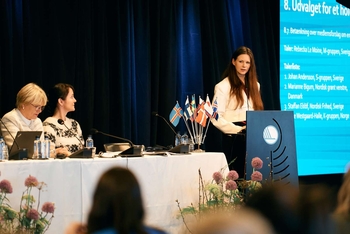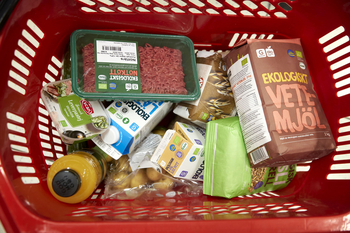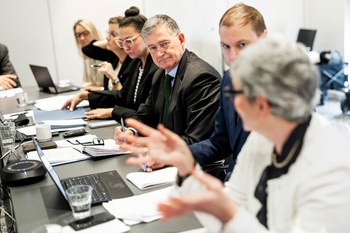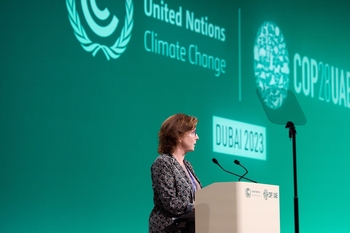25 Nordic bioeconomy cases for sustainable change
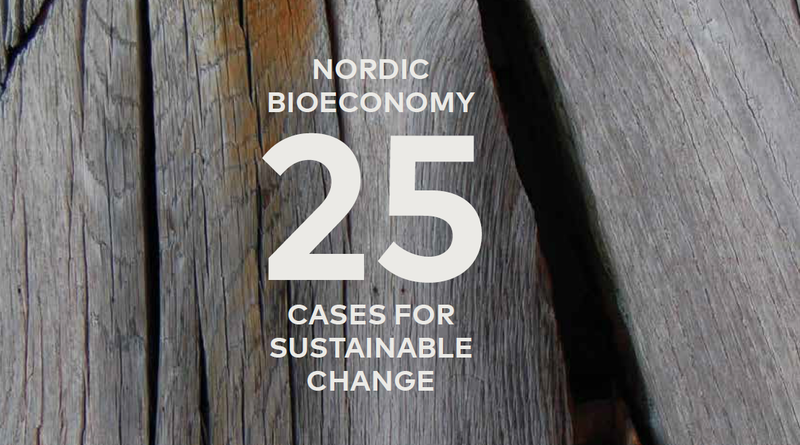
Sustainability criteria can pave the way forward
The Nordic Bioeconomy Panel, the Nordic Council of Ministers and Danish think tank Sustainia have conducted an analysis of 25 bioeconomy cases, assessing their economic, environmental and societal effect. The examples represent a broad range of sectors in the Nordic economies that rely on biological resources from land and sea.
Bioresources – the bioeconomy – play a big role in the Nordic countries’ national economies, be it Finnish forests, Danish fields, or the marine resources in our oceans“Bioresources – the bioeconomy – play a big role in the Nordic countries’ national economies, be it Finnish forests, Danish fields, or the marine resources in our oceans,” says Dagfinn Høybråten, Secretary General of the Nordic Council of Ministers.
The 25 cases exemplify the four categories identified by the Nordic Bioeconomy Panel as strongholds of the Nordic bioeconomy: replace, upgrade, circulate and collaborate.
Each case has been assessed based on five evaluation criteria: sustainable use of natural resources, technology innovation, environmental benefits, societal benefits, and business model innovation.
“The four pillars describe the direction in which all sectors of the bioeconomy need to move,” says Liv la Cour Belling, Project Officer at the Nordic Council of Ministers. “We must replace unsustainable resources, upgrade the use of biological resources throughout the whole value chain, and circulate the resources to allow for renewal and reuse. This is a demanding task, and we can only succeed if we collaborate.”
We must replace unsustainable resources, upgrade the use of biological resources throughout the whole value chain, and circulate the resources to allow for renewal and reuse. This is a demanding task, and we can only succeed if we collaborateThe bioeconomy delivers climate solutions
The replace category focuses on opportunities to replace fossil-based and other unsustainable materials with bio-based materials, not only by substituting fossil energy and fuels, but also by producing higher-value products from the biomass.
Wood based solutions in construction can lower CO2-emissions by 50%The forest sector provides a wealth of solutions when it comes to replacement of fossil-based materials. Highlighted cases include the use of wood materials in construction, production of advanced biofuels from wood-based residues, and the use of cellulose from wood as a replacement for petroleum-based additives.
But there are also replacement opportunities in the ocean, such as cultivated seaweed, which can be used as an ingredient in fish feed, replacing e.g. colorants. One key benefit is that cultivated seaweed does not add to the pressure on the limited areas of arable land.
These initiatives are examples of the ways in which a knowledge-based bioeconomy can provide solutions to mitigate climate change by reducing dependency on fossil fuels and fossil-based raw materials.
Equally significantly, a sustainably managed bioeconomy delivers these solutions while providing valuable ecosystem services and without compromising food security – another major global challenge with the projected population growth in the coming decades.

Valuable products from previous waste streams
Another fundamental priority in the Nordic bioeconomy is to optimise utilisation of biological resources and upgrade surplus biomass to higher value products and services.
The value of the cod skin will be increased by 300% from the current low valueThe blue bioeconomy is at the forefront of upgrading biomass, producing e.g. nutraceuticals, fish oil and feed from previous waste streams, and there are also innovative developments within agriculture, demonstrating e.g. how nutrition supplements can be produced from slaughterhouse and milk production sidestreams.
Also presented are cases working towards substituting imported soy protein for animal feed with more sustainable, locally produced alternatives, and an enzyme-based method to separate organic waste from plastic, glass and metals.
Circularity to eliminate waste
With regards to circularity in the bioeconomy, the catalogue focuses on cases that take the sustainability of the ecosystems and their ability to replace the annual harvest of biological material into account.
Seaweeds are fast-growing and their farming counteracts loss of oxygen in the oceanOne notable case is the Kemi-Tornio region in Finnish Lapland, which generates 1.7 million tons of industrial by-products and residues annually from e.g. mining, metal production, pulp and paper mills, cardboard production, and fertiliser and chemical production.
The region is applying a cross-sectoral approach to optimise the use of these by-products and sidestreams, aiming to achieve full-scale industrial symbiosis and circular economy.
The upgrade and circulate categories reflect the need for the world population to considerably reduce its material footprint and consumption of natural resources, as described in the UN Sustainable Development Goals.
Here, it is important to keep in mind that just using waste and side streams for production is not necessarily sustainable – the primary production from which they derive must also be sustainable in order to achieve the desired environmental effect.
The Nordic Bioeconomy Panel advocates fundamental changes to all production systems, aspiring to eliminate waste entirely and avoid negative impacts on the climate and the environment.
Bioeconomy transition transcends sectors
Cross-sectoral collaboration and public-private partnerships involving industry, authorities and R&D institutions is crucial in creating a successful bioeconomy. One example of such collaboration is a strategic innovation programme aiming to turn Sweden into a full bioeconomy by 2050.
Reaching zero waste and becoming a non-carbon economyMoreover, the collaboration category describes cases where local and regional communities embrace the bioeconomy to generate new revenue streams and strive for a transition towards zero-waste, non-carbon economies.
These cases provide excellent examples of the type of collaboration between authorities, producers throughout the whole value chain and, not least, responsible consumers, which will be essential in the move towards more sustainable patterns of production and consumption.
To succeed, we need to have the courage to think very differently, find new solutions and come together in collaborations that transcend sectors and involve partners we never imagined working with beforeStrategy proposal finalised in 2017
The Nordic Bioeconomy Panel is currently working on its proposal for a joint Nordic bioeconomy strategy, which will be presented by the end of 2017 and signed by the Ministers of Nordic Co-operation. The case catalogue – Nordic bioeconomy – 25 cases for a sustainable change - is an important part of the development of this strategy. According to Hörður G. Kristinsson, chair of the Panel, cross-sectoral collaboration and innovation will be key features:
“To succeed, we need to have the courage to think very differently, find new solutions and come together in collaborations that transcend sectors and involve partners we never imagined working with before.”
Read the new publication:
